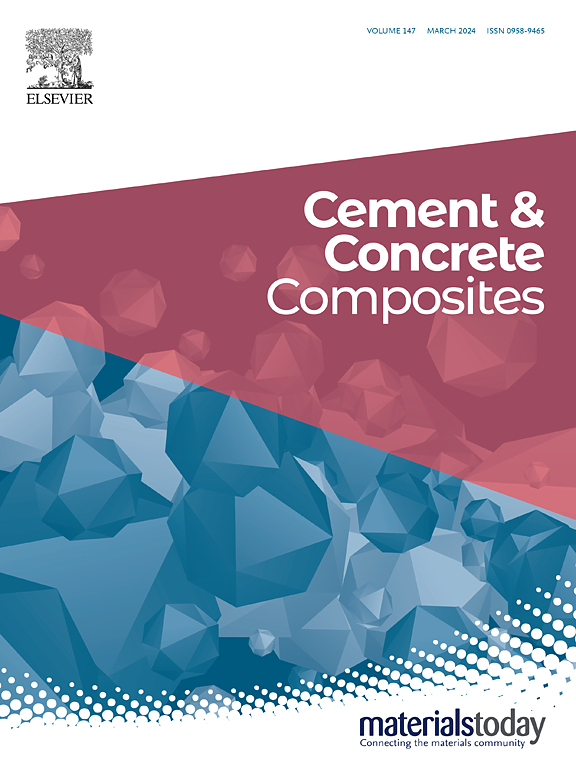混凝土界面过渡区氯离子各向异性扩散系数的定量研究
IF 10.8
1区 工程技术
Q1 CONSTRUCTION & BUILDING TECHNOLOGY
引用次数: 0
摘要
混凝土中水泥浆体与骨料界面过渡区的氯离子扩散系数和孔隙结构的实验测量因其微观尺度而具有挑战性。孔隙连通性与氯离子扩散系数之间的定量关系尚未建立和实验验证。本文采用人工集料法和自然扩散法直接测定了氯离子在ITZ中的扩散系数,较好地模拟了混凝土的实际使用条件。采用基于水泥水化的三维孔隙结构模型对孔隙连通性进行了分析。结果表明:扩散系数约为水泥浆体扩散系数的5 ~ 10倍。此外,氯离子在ITZ中的扩散系数表现出各向异性:在平行于聚集体界面的方向上,孔隙度连通性高,扩散系数大。这是氯离子在ITZ内的扩散行为不同于散装水泥浆体的主要原因,扩散系数与孔隙率呈线性关系。本文章由计算机程序翻译,如有差异,请以英文原文为准。
Quantifying anisotropic chloride diffusion coefficients of interfacial transition zone in concrete
Experimental measurement of chloride ion diffusion coefficient and pore structure of the interfacial transition zone (ITZ) between cement paste and aggregate in concrete is challenging because of its microscopic scale. The quantitative relationship between pore connectivity and the chloride diffusion coefficient has yet to be established and experimentally validated. In this work, the chloride ion diffusion coefficient in the ITZ was directly determined in experiments using artificial aggregates and the natural diffusion method, which closely simulates the realistic service conditions of concrete. The pore connectivity was analyzed using a three-dimensional pore structure model based on cement hydration. The results indicate that the magnitude of diffusion coefficient in the ITZ is approximately five to ten times that of the cement paste. In addition, the chloride ion diffusion coefficient in the ITZ exhibits anisotropy: in the direction parallel to the aggregate interface, there is high porosity connectivity and a large diffusion coefficient. This is the primary reason behind the distinctive diffusion behavior of chloride ions inside ITZ from that in bulk cement paste, as evidenced by the linear relationship between the diffusion coefficient and porosity.
求助全文
通过发布文献求助,成功后即可免费获取论文全文。
去求助
来源期刊

Cement & concrete composites
工程技术-材料科学:复合
CiteScore
18.70
自引率
11.40%
发文量
459
审稿时长
65 days
期刊介绍:
Cement & concrete composites focuses on advancements in cement-concrete composite technology and the production, use, and performance of cement-based construction materials. It covers a wide range of materials, including fiber-reinforced composites, polymer composites, ferrocement, and those incorporating special aggregates or waste materials. Major themes include microstructure, material properties, testing, durability, mechanics, modeling, design, fabrication, and practical applications. The journal welcomes papers on structural behavior, field studies, repair and maintenance, serviceability, and sustainability. It aims to enhance understanding, provide a platform for unconventional materials, promote low-cost energy-saving materials, and bridge the gap between materials science, engineering, and construction. Special issues on emerging topics are also published to encourage collaboration between materials scientists, engineers, designers, and fabricators.
 求助内容:
求助内容: 应助结果提醒方式:
应助结果提醒方式:


